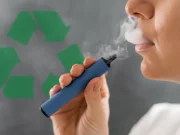While the FDA insists that vaping amongst teens has become an “epidemic”, in a recent interview the U.S. Surgeon General said that latest e-cig models containing higher levels of nicotine are to blame for the rising tobacco use among young people.
“We’ve seen tobacco use among youth go down over the last decade, it’s now starting to go back up because of e-cigarettes,” said Dr. Jerome Adams. “It’s a fundamentally different product we have compared to the e-cigarettes of old,” he said.
Adams said that the fact that modern devices contain more nicotine is problematic. “It delivers much more nicotine, and we’re hearing from high school principals and from parents that kids out there now are becoming, rapidly becoming addicted to these products, so I’m worried the numbers are going to get worse this year.”
Several public health experts have spoken up, pointing out that these claims are exaggerated, however several US law entities are proceeding with harsh vaping bans. Additionally a recent report by the US Substance Abuse and Mental Health Services Administration (SAMHSA), has indicated that contrary to these claims, actually data indicate that smoking rates continue to drop amongst all age groups.
Vapour Detection Technology
“The HALO sensors were simple to install and configure by our own staff members in only a few hours… within the first 3 days of installation, 9 students were caught vaping.”
Meanwhile, a school district in Sussex County, New Jersey, is currently testing out new pilot devices before deciding if the entire district should adopt them. According to IPVideo Corporation, makers of the popular Halo Smart Sensor, their device can not only detect e-liquid vapor, but also THC vapor, regular smoke, carbon dioxide, propane, methane, and even things like light levels and air pressure.
“The HALO sensors were simple to install and configure by our own staff members in only a few hours… within the first 3 days of installation, 9 students were caught vaping. Anecdotal reports from students indicate that after only two weeks, vaping has decreased drastically throughout our schools,” said Dr. Mark D. Beehler, Assistant Superintendent of the Salamanca City CSD.
No alarming teen vaping rates in the UK
Also contrary to the alleged alarming US figures reported by the FDA, an ASH report from the UK, has indicated that the proportion of under 18s who try vaping has dropped to the lowest level since 2016. The following were the key findings:
“-More than three quarters of 11-18 year olds have never tried (76.9%) or are unaware of e-cigarettes (6.6%).
-Young people vape mainly just to give it a try (52.4%) not because they think it looks cool (1.0%).
-In 2019 15.4% of 11-18 year olds had tried vaping, compared to 16.0% in 2018. This is an increase from 2015 when 12.7% of 11-18 year olds had tried e-cigarettes.
-In 2019, 1.6% of 11-18 year olds used e-cigarettes more than once a week (1.7% in 2018) compared to 0.5% in 2015.
-Vaping is much less common among young people who have never smoked. A large majority of never smokers aged 11-18, 93.8% in total, have either never used an e-cigarette (87.8%) or are unaware of them (6.0%). Of young people aged 11-18 years old who have never smoked, 5.5% have ever tried e-cigarettes, 0.8% are current vapers, only 0.1% vape more than once a week, and not a single never smoker reported vaping daily.
-Children under 16 are less likely to try e-cigarettes than 16-18 year olds. 8.5% of 11-15 year olds have tried vaping, compared to 26.7% of 16-18 year olds.”
Read Further: ChurnMag.com













